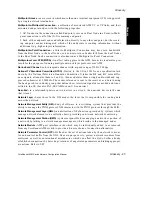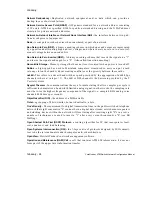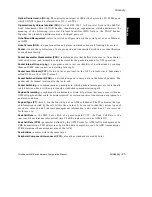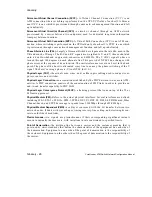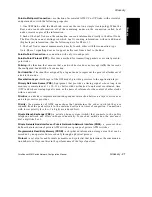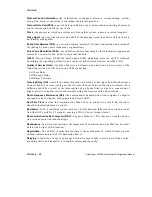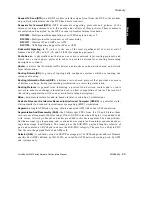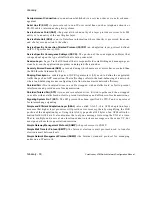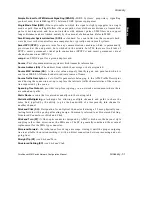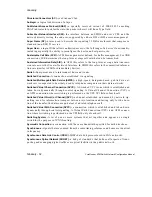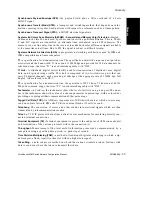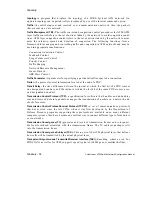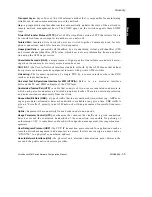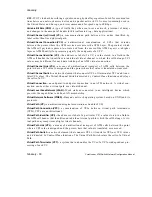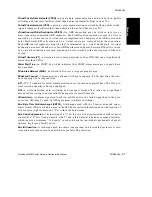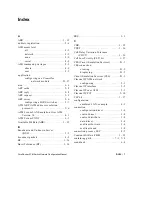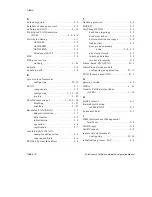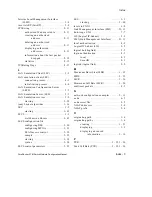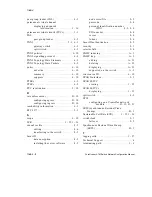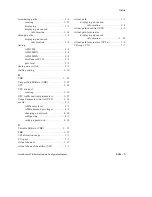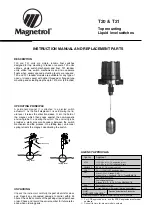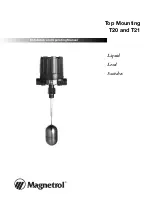
ForeRunner
ATM Switch Network Configuration Manual
Glossary - 37
Gl
o
s
s
a
ry
Glossary
Virtual Private Data Network (VPDN) -
a private data communications network built on public
switching and transport facilities rather than dedicated leased facilities such as T1s.
Virtual Private Network (VPN) -
a private voice communications network built on public switch-
ing and transport facilities rather than dedicated leased facilities such as T1s.
Virtual Source/Virtual Destination (VS/VD) -
An ABR connection may be divided into two or
more separately controlled ABR segments. Each ABR control segment, except the first, is
sourced by a virtual source. A virtual source implements the behavior of an ABR source end-
point. Backwards RM-cells received by a virtual source are removed from the connection.
Each ABR control segment, except the last, is terminated by a virtual destination. A virtual
destination assumes the behavior of an ABR destination endpoint. Forward RM-cells received
by a virtual destination are turned around and not forwarded to the next segment of the con-
nection.
Virtual Tributary (VT) -
a structure used to carry payloads such as DS1s that run at significantly
lower rates than STS-1s.
Warm Start Trap -
an SNMP trap which indicates that SNMP alarm messages or agents have
been enabled.
Wide-Area Network (WAN) -
a network that covers a large geographic area.
Wideband Channel -
Communications channel with more capacity (19.2K bps) than the stan-
dard capacity of a voice grade line.
X.21 -
ITU-T standard for serial communications over synchronous digital lines. The X.21 pro-
tocol is used primarily in Europe and Japan.
X.25 -
a well-established data switching and transport method that relies on a significant
amount of processing to ensure reliable transport over metallic media.
Yellow Alarm -
An alarm signal sent back toward the source of a failed signal due to the pres-
ence of an AIS (may be used by APS equipment to initiate switching).
Zero Byte Time Slot Interchange (ZBTSI) -
A technique used with the T carrier extended super-
frame format (ESF) in which an area in the ESF frame carries information about the location of
all-zero bytes (eight consecutive “0”s) within the data stream.
Zero Code Suppression -
The insertion of a “1” bit to prevent the transmission of eight or more
consecutive “0” bits. Used primarily with T1 and related digital telephone company facilities,
which require a minimum “1’s density” in order to keep the individual subchannels of a mul-
tiplexed, high speed facility active.
Zero-Bit Insertion -
A technique used to achieve transparency in bit-oriented protocols. A zero
is inserted into sequences of one bits that cause false flag direction.
Summary of Contents for forerunner series
Page 6: ......
Page 16: ...TOC 10 ForeRunner ATM Switch Network Configuration Manual Table of Contents ...
Page 20: ...LOF 4 ForeRunner ATM Switch Network Configuration Manual List of Figures ...
Page 22: ...LOT 2 ForeRunner ATM Switch Network Configuration Manual List of Tables ...
Page 30: ...viii ForeRunner ATM Switch Network Configuration Manual Preface ...
Page 144: ...3 58 ForeRunner ATM Switch Network Configuration Manual Configuring an Emulated LAN ...
Page 180: ...6 12 ForeRunner ATM Switch Network Configuration Manual ATM Forum PNNI ...
Page 220: ...9 6 ForeRunner ATM Switch Network Configuration Manual Configuring Timing ...
Page 300: ...D 24 ForeRunner ATM Switch Network Configuration Manual Configuring FramePlus Modules ...
Page 308: ...Acronyms 8 ForeRunner ATM Switch Network Configuration Manual Acronyms ...
Page 346: ...Glossary 38 ForeRunner ATM Switch Network Configuration Manual Glossary ...
Page 352: ...Index 6 ForeRunner ATM Switch Network Configuration Manual Index ...

